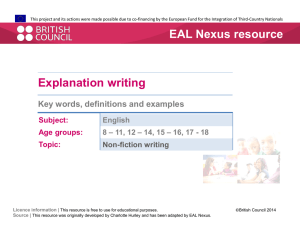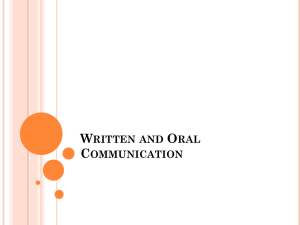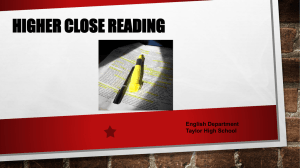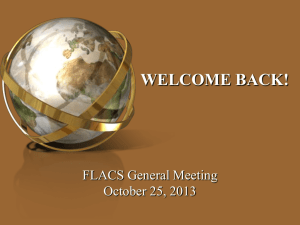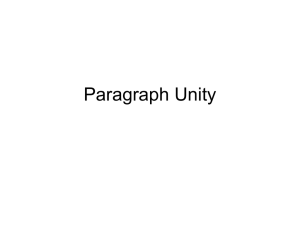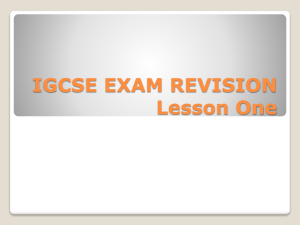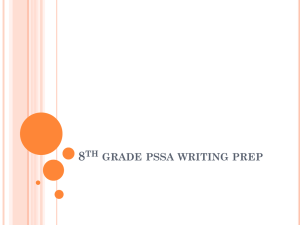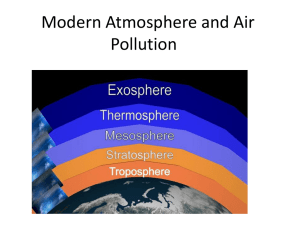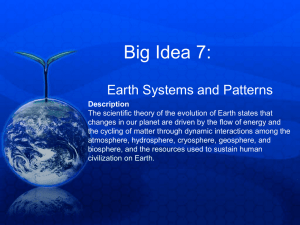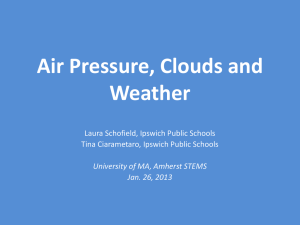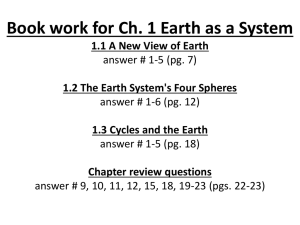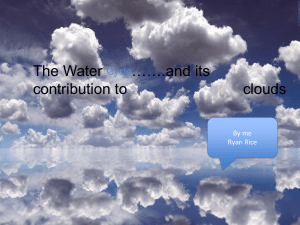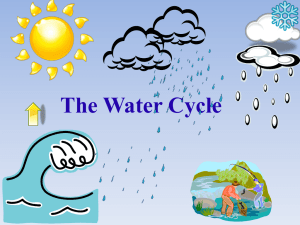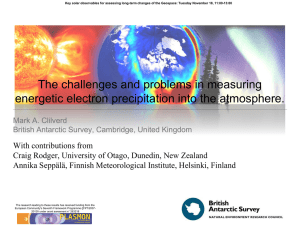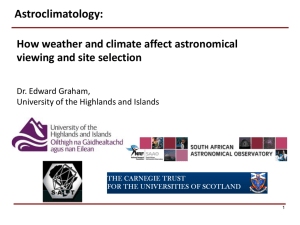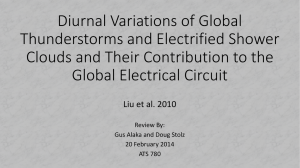Question-2-Revision
advertisement
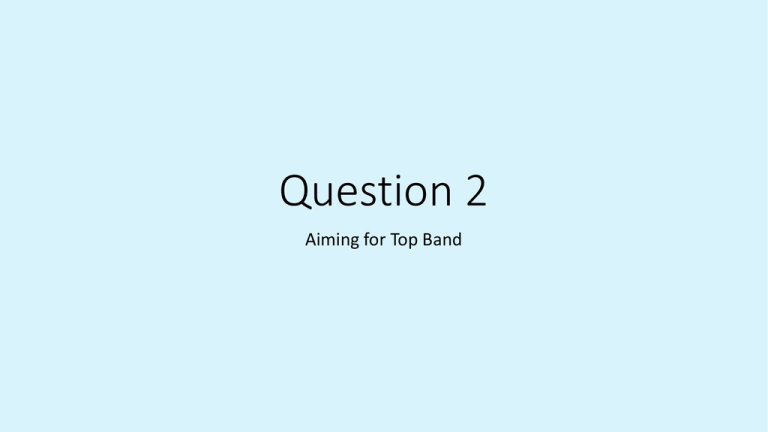
Question 2 Aiming for Top Band Step 1: READ THE QUESTION! • 2 Re-read the descriptions of: • (a) the appearance of the cloud and the atmosphere before the storm, in paragraph 4, beginning ‘This afternoon . . .’ • (b) the rain and the wind in paragraph 7, beginning ‘I predicted . . .’ • Select words and phrases from these descriptions, and explain how the writer has created effects by using this language. Find Your Paragraphs • Identify the two paragraphs you need. • Draw a box around them so that you know exactly which paragraphs you are analysing. • Put key words near or next to them to remind you what you need to write about. • (a) the appearance of the cloud and the atmosphere before the storm, in paragraph 4, beginning ‘This afternoon . . .’ • (b) the rain and the wind in paragraph 7, beginning ‘I predicted . . .’ Focus! Number your paragraphs and double check that you have selected the correct paragraph to analyse. Check the first lines. (a) the appearance of the cloud and the atmosphere before the storm, in paragraph 4, beginning ‘This afternoon . . .’ Make sure you are only writing about what they want you to discuss. • This afternoon, a heavy bank of cloud hangs out to sea. It has no anger yet, but is full of menace as if it is waiting to roll steadily ashore. I have seen such a sight only once before. I feel an atmosphere of tense stillness. No breeze, no sound. But my eye is fixed on that terrible bowl of blackness, as the light around me begins to fail. In a way, I love to watch this. It awakens my imagination as I experience the power of the elements and realise how small I am on the great canvas of nature. None of this is relevant as it is not about the clouds or the atmosphere. You need to select your phrases carefully. The Mark Scheme – Aiming for Top Band • Wide ranging discussion of language with some high quality comments that add meaning and associations to words in both parts of the question, and demonstrate the writer's reasons for using them. • Make sure that you are discussing a range of ideas (at least three) – try not to be too repetitive. • Consider the connotations of key words and link to their impact on the reader. • You need to discuss why the writer chose those words. How to hit “wide ranging” • In order to cover a wide range of language, try to select: • individual words to analyse, specifically looking at connotations of particular words • examples of figurative language e.g. metaphors and explain the impact they have on the reader The Mark Scheme – Aiming for Top Band • May give an overview of the paragraph’s combined effect. • Consider giving a summarising statement after you have analysed specific words. • For example: Overall, the effect this paragraph has on the reader is… The Mark Scheme – Aiming for Top Band • Comment on language features additional to vocabulary. • As well as analysing specific words, try to select an example of metaphor, simile, personification etc. The Mark Scheme – Aiming for Top Band • Tackles imagery with some precision and imagination. • Make sure you select an example of imagery to analyse. Selecting Details Paragraph 4: Clouds and Atmosphere • This afternoon, a heavy bank of cloud hangs out to sea. It has no anger yet, but is full of menace as if it is waiting to roll steadily ashore. I have seen such a sight only once before. I feel an atmosphere of tense stillness. No breeze, no sound. But my eye is fixed on that terrible bowl of blackness, as the light around me begins to fail. In a way, I love to watch this. It awakens my imagination as I experience the power of the elements and realise how small I am on the great canvas of nature. Example Select specific words and discuss their connotations Make sure cover every part of the question. Use terminology and discuss the image they create. The writer has used a number of effective words and images to describe the clouds and the atmosphere. The writer describes the appearance of the clouds as “heavy” and “full” making it seem very large and threatening. By doing this, the writer is trying to emphasise the power and strength of the clouds to the reader to make the narrator seem more vulnerable. Also, the writer builds up a sense of fear and anticipation for the reader by describing the atmosphere as a “tense stillness.” The word “tense” highlights to the reader that the atmosphere is something to be frightened of as “tense” has connotations of fear and nervousness. Furthermore, the appearance of the clouds as “waiting to roll steadily in” personifies them and adds to the tension created by the description of the atmosphere. This image makes the clouds appear to be calculating their attack on the shore, reinforcing the idea that the clouds and the storm are incredibly dangerous. Overall, the main effect the writer has achieved with this description is one of fear and threat. Your Turn: (b) the rain and the wind in paragraph 7, beginning ‘I predicted . . .’ • Make sure you are only selecting words and phrases that are about the rain and the wind. • I predicted this storm and it is the most magnificent I have ever known. It has unleashed a swirling mass of water that no person could withstand. I have attempted to confront this tempest, but it beats me into a crouching apology of a man. The rain smashes itself against my little house like a demented hail of shrapnel. I shout at the top of my voice in defiance, but the elements drown me out. Behind the sheets of rain, I see the frenzied waves rearing their heads against me. Although I am afraid, the sight of such a monstrous sea always excites my very being. Spotting Devices • Look at Paragraph 7 which begins “I predicted…” • Can you find an example of: • Metaphor • Personification • Simile • They MUST be about the rain or the wind! The Task: Explain how the writer has created effects by using this language. What effect do the devices you have identified have on the reader?
